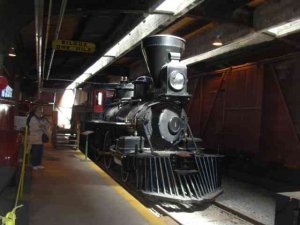Wow... that difference is really surprising...!
While there would be some difference in size between the prototypes, I am not sure it is as drastic as that.
Jupiter was built in 1868, while the protoype for the MP was probably built in the ealry 1900s, and possibly modified in the late 1920s or 30s. So up to almost 50 years of innovation could be seen in the MP model versus
Jupiter.
For a better understanding if one (or both) is out of scale, look at the "people parts" of the locos. How high is the ceiling of the cab? What sizes are the grabs, ladders, or other parts that the crew would have used directly? Last check could be a comparison of something like the driver size or overall length of the real thing versus the model.
To start you off, here's a picture of
Jupiter with some people to give an idea of scale:
http://users.tns.net/~path/GS60.html
Here's a better page with scale diagrams of her -
Union Pacific Locomotive #119 and Central Pacific Locomotive #60, Jupiter at Promontory Summit, Utah, May 10, 1869 by Roy E. Appleman. National Park Service Report, July 1966. You can download an entire 376 page pdf, but it looks like the engine itself should be only 35 feet long (not including tender), with what looks like 63" drivers. This seems to agree with the picture above, where the gentleman at the front could be assumed to be about 6 feet tall.
Hope that helps.
Andrew






